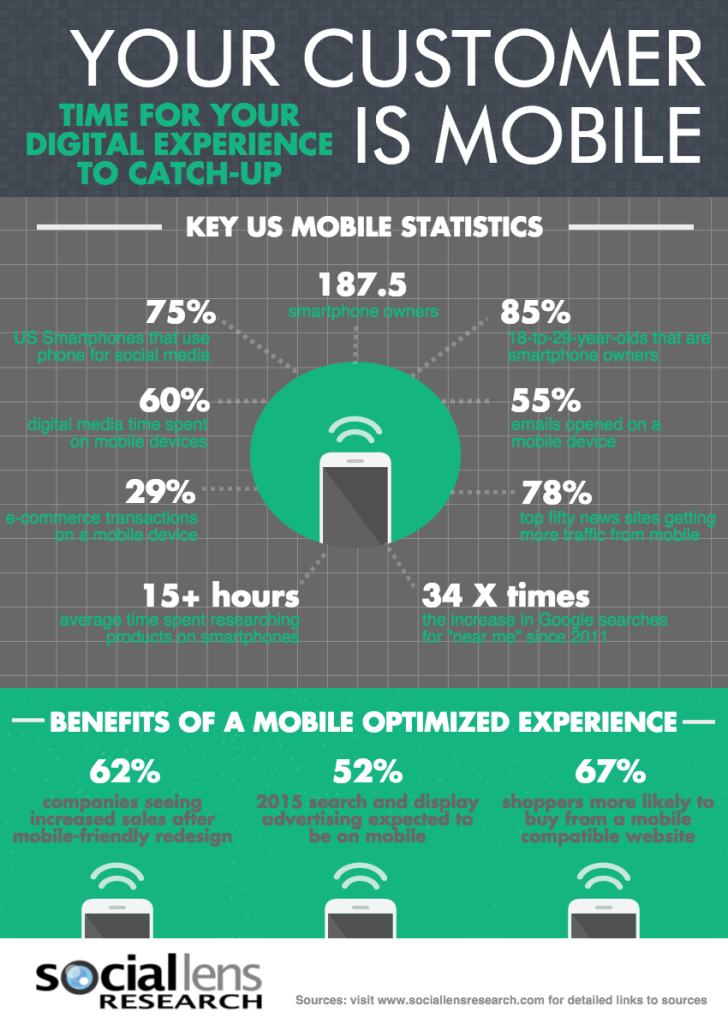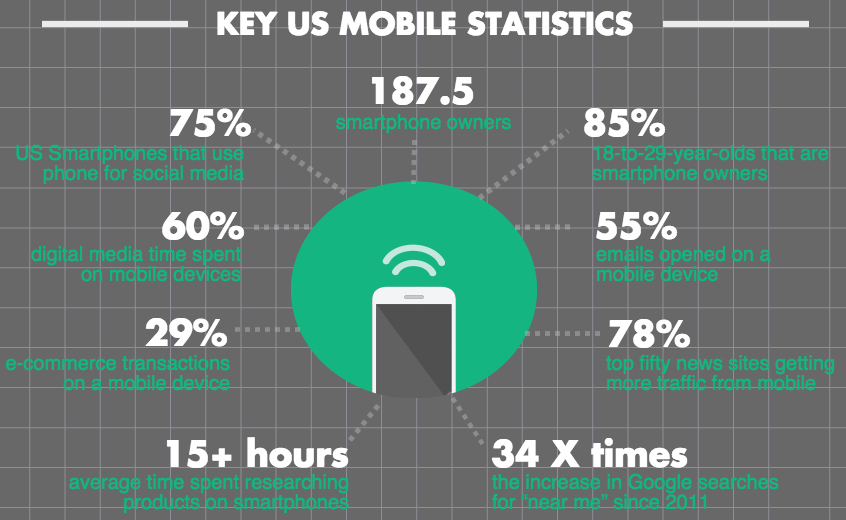All industry statistics point to an increased use of mobile in almost every industry or sector, from banking to TV to education to exercise. For anyone who is not convinced, Google is levying a heavy penalty for sites that are not optimized. Learn more about Google’s mobile friendly algorithm here.
Here are some key statistics on the current state of mobile adoption:
187.5 million US Smartphone owners.
85% of 18-to-29-year-olds own a smartphone.
75% of US Smartphone owners use their phone for social media.
60% of American’s digital media time spent on mobile devices.
55% of emails opened on a mobile device.
78% of top fifty news sites getting more traffic from mobile than desktop.
29% of all e-commerce transactions are on a mobile device.
15+ hours average time spent researching products on smartphones.
34 Times the increase in Google searches for “near me” since 2011.
The top benefits of a mobile optimized customer experience (CX):
62% percentage of companies seeing increased sales after mobile-friendly redesign.
52% percentage of 2015 search and display advertising expected to be on mobile.
67% of shoppers say they’re more likely to buy from a mobile compatible website.

How do you know if you are mobile CX ready? Here are a few critical first assessment steps you can do with no budget and on your own:
- Google Test Tool: Take the free google mobile friendly test here. Simple, but gives you a mobile optimization scoring. It’s an inch deep and doesn’t tell you if your site visitors actually take your desired actions on the site, so it’s important to do the following two tests.
- Usability Test: Conduct an iPhone and Android usability test for the top actions you want users to take on your site (sign up for a newsletter, donate, buy, read/share a blog post, etc.). Start with doing it internally with your team. You will probably find some issues right away, like how hard it is to sign up for a newsletter from the site.
- Benchmark Test: Compare how you do versus relevant benchmarks. For example, compare how you do versus your top three competitors, and then two start-ups in related fields. A very simple internal exercise that will likely identify some opportunities to improve your mobile experience.
These will give you a good baseline on what needs a fast fix. With time and some limited expenditure consider doing deeper research into how you can transform and enhance what you offer your target audience via mobile technology.
First, repeat usability and benchmarking with a group of your target users to get more insights on enhancement opportunities. To get to another level of innovation, consider doing some deeper dive ethnographic work and co-creation with the target users. You can probe your target users needs deeply and get them involved in creating a better solution (brainstorm, iterate designs, test, become your first users).
Your customer is now officially mobile. Now it’s time for your digital experience to catch-up.
Embed This Image On Your Site (copy code below):

